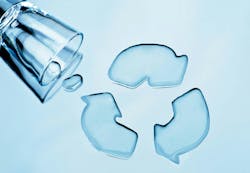Quantifying green: How to leverage EPDs and LCAs to demonstrate sustainability
The water industry is aware of the environmental challenges we face globally as we discover emerging contaminants plaguing our water sources and face challenges with water treatment and water scarcity. There is a need to create and implement innovative technologies as solutions. While many manufacturers may want to become more sustainable as a responsible way of operating, they may also want to gain a competitive advantage with their consumers as a preferred purchasing choice. A recent consumer sentiment survey showed that 78% of U.S. consumers state that a sustainable lifestyle is important to them, while 60% say they would pay more for a product with sustainable packaging. This data has many companies wondering how they can showcase their environmental efforts to become a more attractive purchasing option to consumers, and water manufacturing companies are no exception.
To verify environmental commitments, water product manufacturers can leverage two critical tools that help prove their sustainability efforts: life cycle assessments (LCAs) and environmental product declarations (EPDs). LCAs are in-depth studies that evaluate the environmental impacts of a product or service, while EPDs are a summary of the LCA. Both tools help water manufacturers stand out among consumers, making their products preferred.
Choosing the right LCA
LCAs were initially developed in the 1960s following growing concerns over the earth’s limited resources. Since then, they have become an effective way for companies to make strategic environmental decisions about their products. There are three main types of LCAs that companies may leverage for strategic decisions and benefit their bottom line. These types of LCAs include:
1. Scoping/Screening LCA: Used for rough environmental-impact estimates for new products or industry analysis.
2. Comprehensive LCA: Uses primary data for a specific product.
3. Comparative LCA: Used to compare results to an equivalent product.
Water product manufacturers who have already created a product will want to conduct a comprehensive LCA to dive deeply into their product’s environmental impact. For manufacturers analyzing new products or general industries, a screening level LCA will be most helpful in assessing environmental impacts using secondary data. By leveraging information discovered through the LCA process, manufacturers will be able to better communicate findings to consumers and make better-informed product development decisions.
Understanding EPDs
EPDs are standardized reports that transparently describe a product’s LCA, including the manufacturing processes and environmental impacts of a product from inception to decomposition. The purpose of EPDs is to provide an objective comparison for consumers to understand the environmental impact of products throughout their entire lifecycle. Critical areas that an EPD may cover include embodied carbon, water pollution, and air pollution.
As part of the EPD process, the product is first categorized into an associated product category rule (PCR). A PCR defines product attributes for the measurement of products in specific categories. For water-relevant categories, PCRs include categories like commercial faucets, piping systems for sewer and stormwater systems, plumbing vessels, rigid and flexible building piping systems, etc.
It is important for manufacturers whose products can be used in buildings to note that EPDs are commonly required in LEED and International Green Construction Code projects. EPDs are also now the primary disclosure method for a product’s embodied carbon. This is why they are actively incorporated into state and federal procurement policies.
Private sector standards
By understanding where LCAs and EPDs are required, water product manufacturers can operate more tactically and differentiate themselves in the marketplace. This applies to the United States government’s Environmentally Preferable Purchasing (EPP) program. The program is set up to create a more sustainable marketplace to help the country’s competitiveness in reducing climate impact and improving human health. The government utilizes private sector standards, like NSF’s multi-attribute sustainable product standards, through the program to streamline the purchasing process of often complex product attributes. Water product manufacturers can earn their product’s preferred status if they have an LCA and EPD to validate their sustainability efforts unbiasedly and transparently.
Verifying impact with third-party support
For water manufacturers unsure where to begin in producing an LCA and EPD for their products, program operators like NSF can offer third-party support. NSF critically reviews an LCA to ensure it conforms with the appropriate ISO 140/40/44 standard and relevant PCR requirements and verifies EPDs to ensure their conformance with ISO 14025, ISO 21930, EN 15804, and its relevant PCR. Meeting these requirements is crucial for a valid EPD that can be used in the EPP program, LEED and International Green Construction Code projects. NSF-verified EPDs are publicly listed and can be integrated into marketing materials, websites, and sales strategies. They can then be utilized to support procurement demands.
In conclusion, as an industry, many are working on sustainable solutions to our dwindling water resources and focusing on protecting public health as we discover more emerging contaminants. In a world where many companies make environmental claims about their operations and products, EPDs and LCAs play a critical role in water product manufacturers independently evaluating and verifying their environmental impact. This allows sustainability-focused consumers to feel more confident in the products they are purchasing by understanding a product’s lifecycle. Furthermore, it can help manufacturers stand out among the numerous products on the market and support their sales. Operating with an eco-friendly mindset helps everyone as we work to create a more sustainable future for all.
About the Author
Justin Brown
Senior Manager, Environmental Products Group, NSF
Justin Brown has been with NSF for over 22 years and serves as the Senior Manager of the Environmental Products Group. His expertise includes sustainable product certification, EPD verification, wastewater treatment system product certification & biosafety cabinetry product certification. For more information on EPDs and LCAs, please email him at [email protected].
